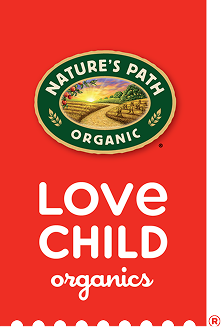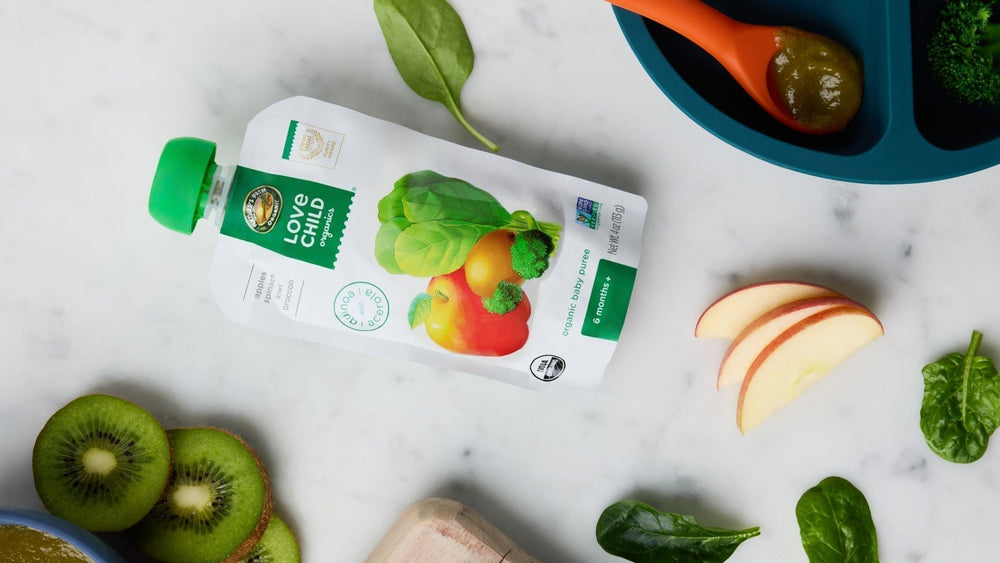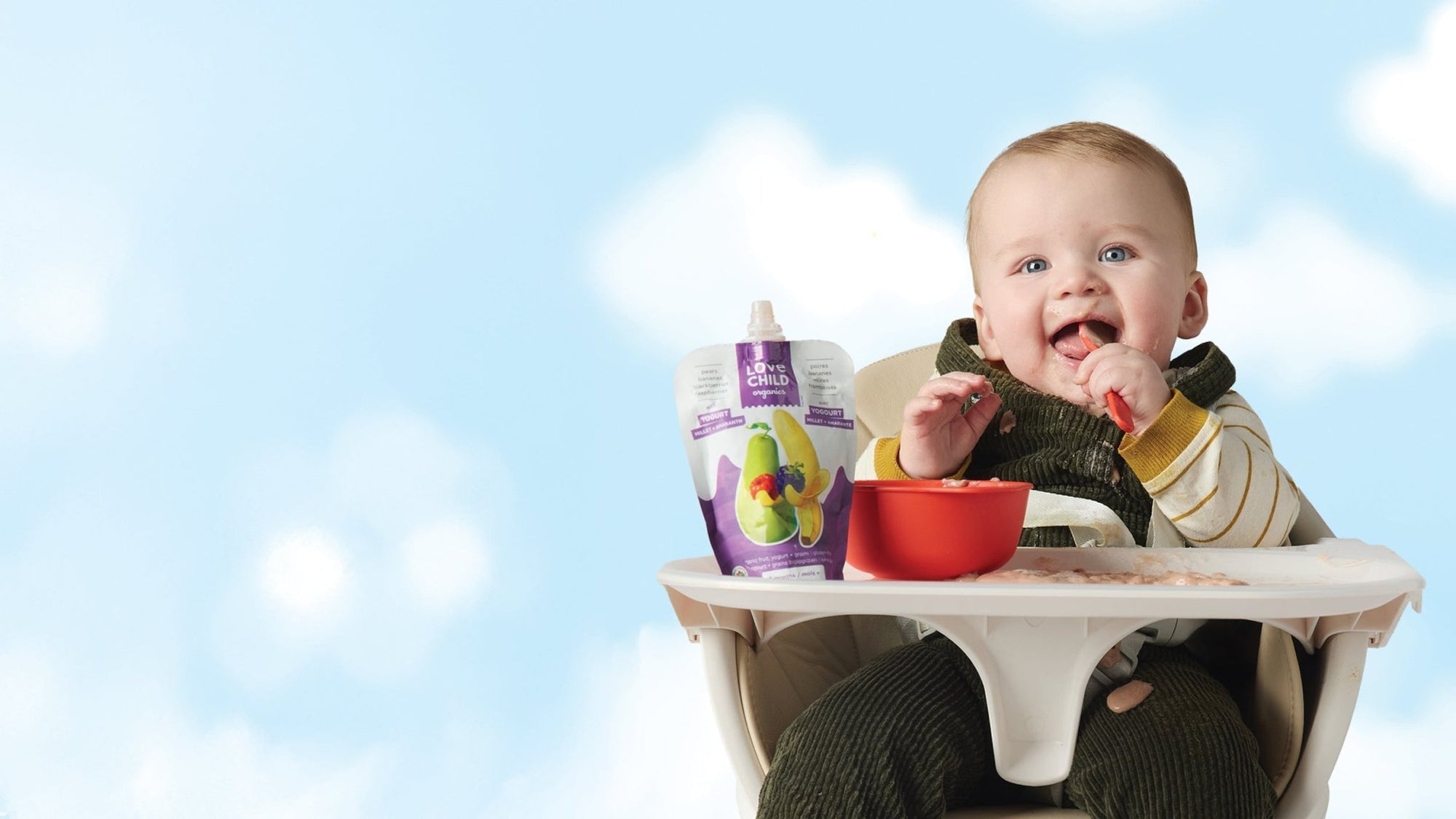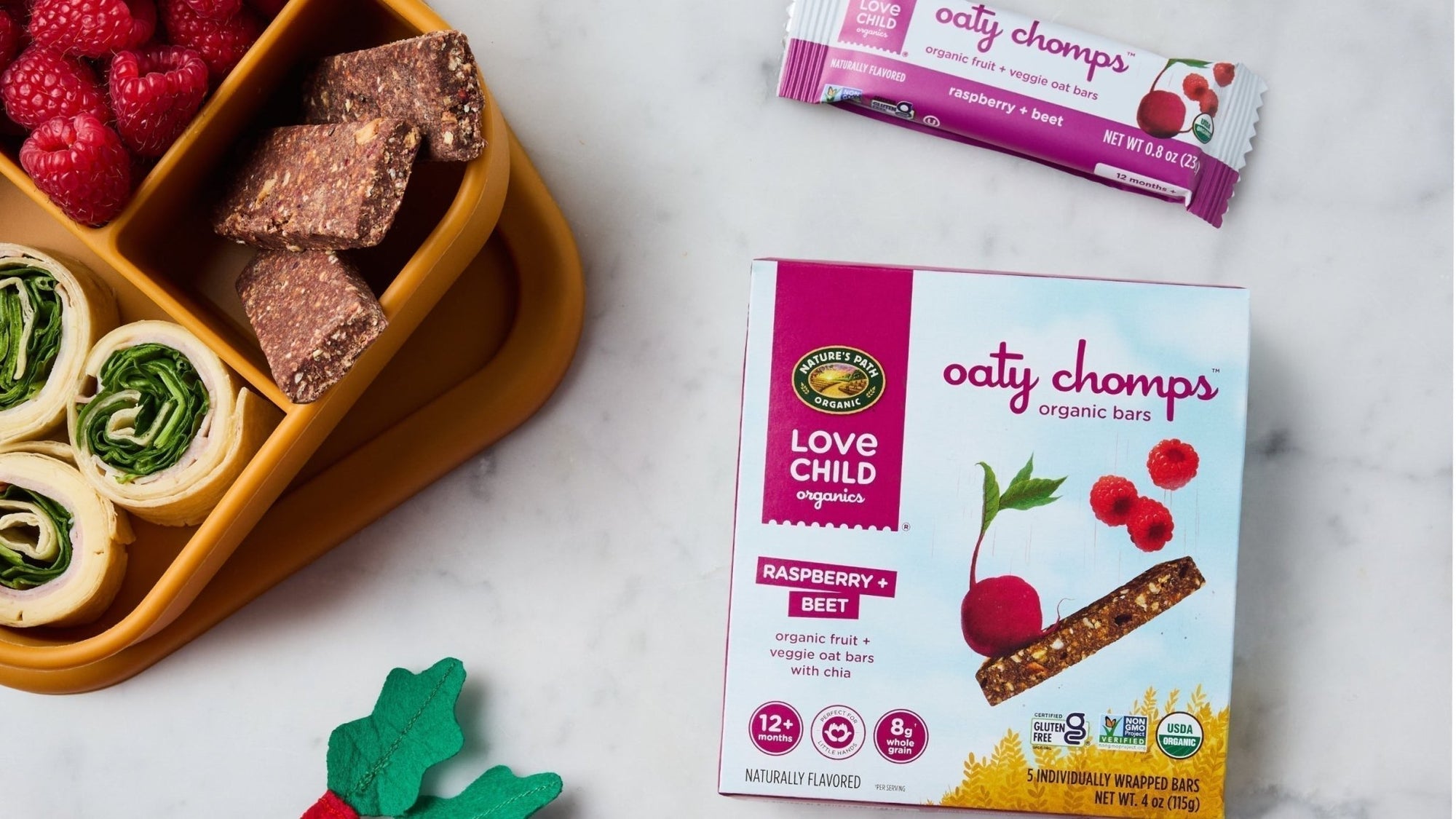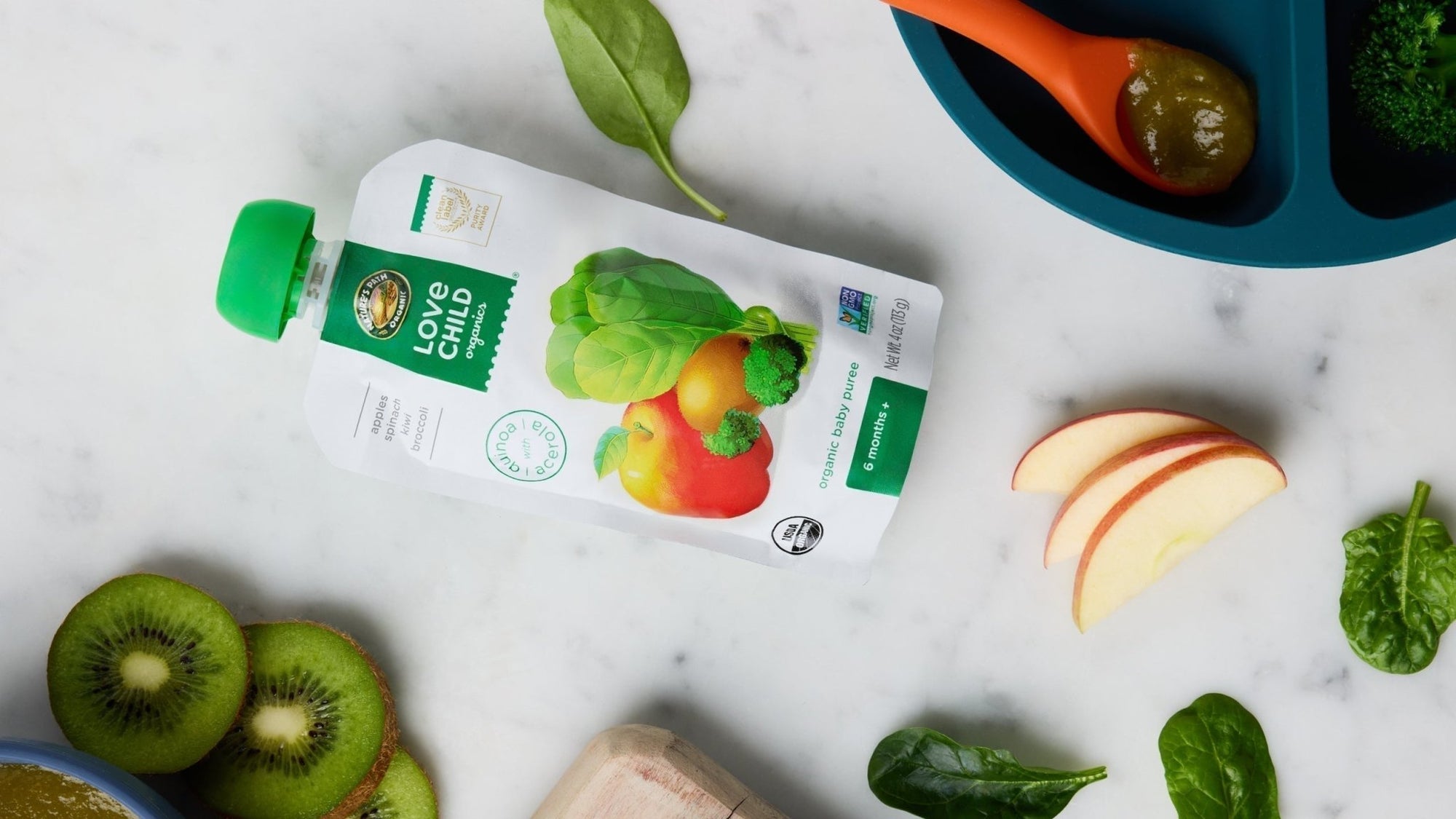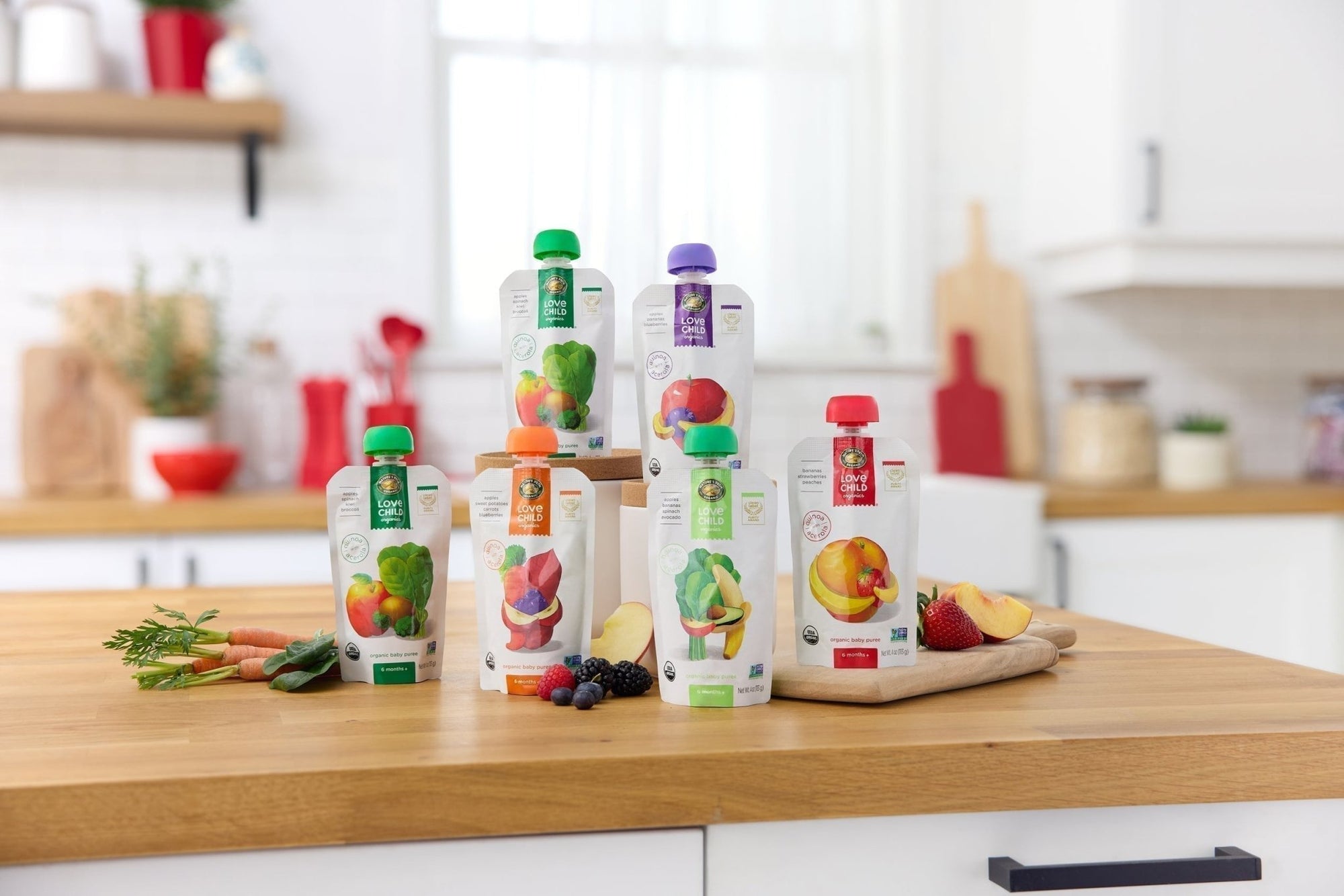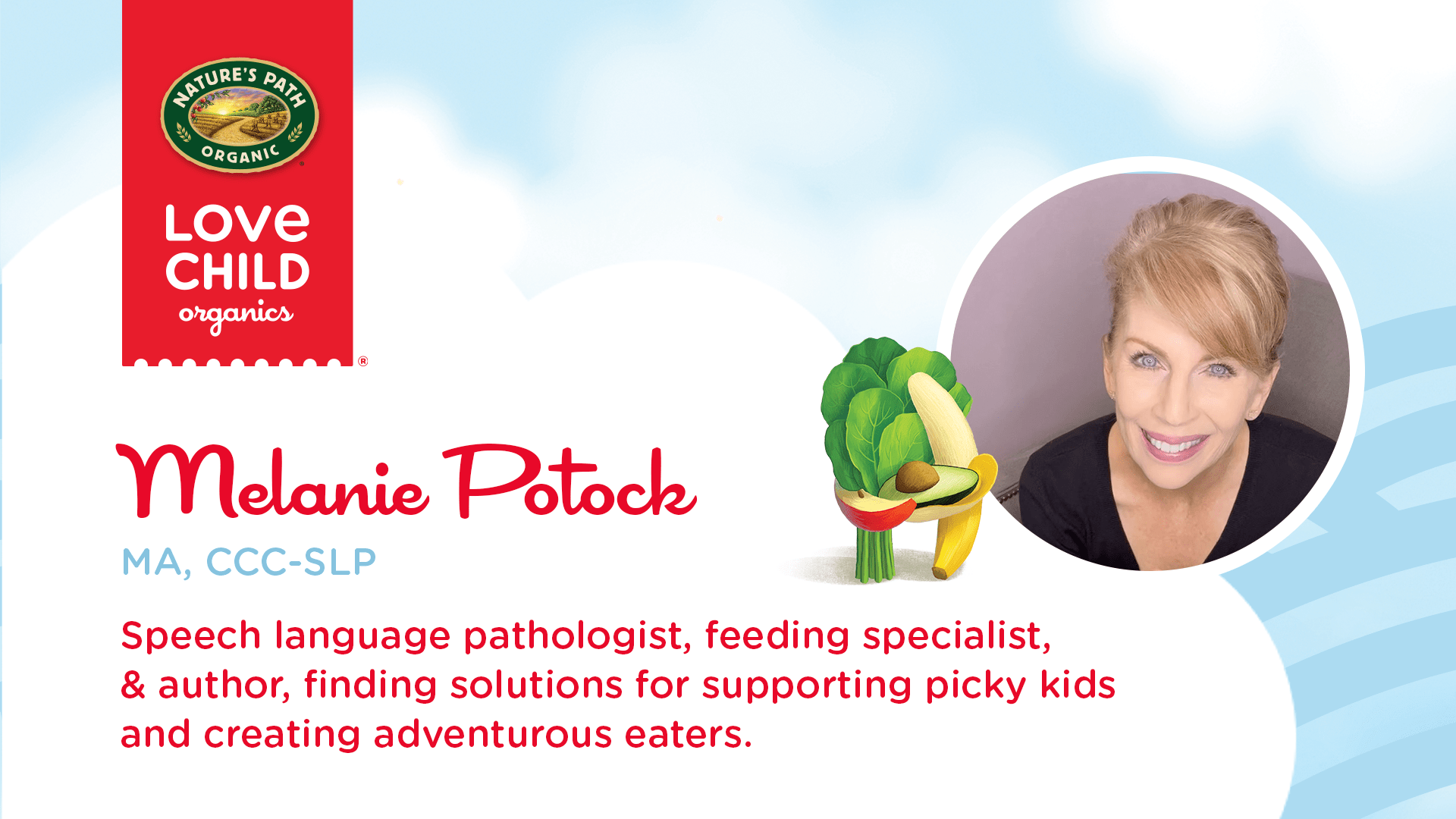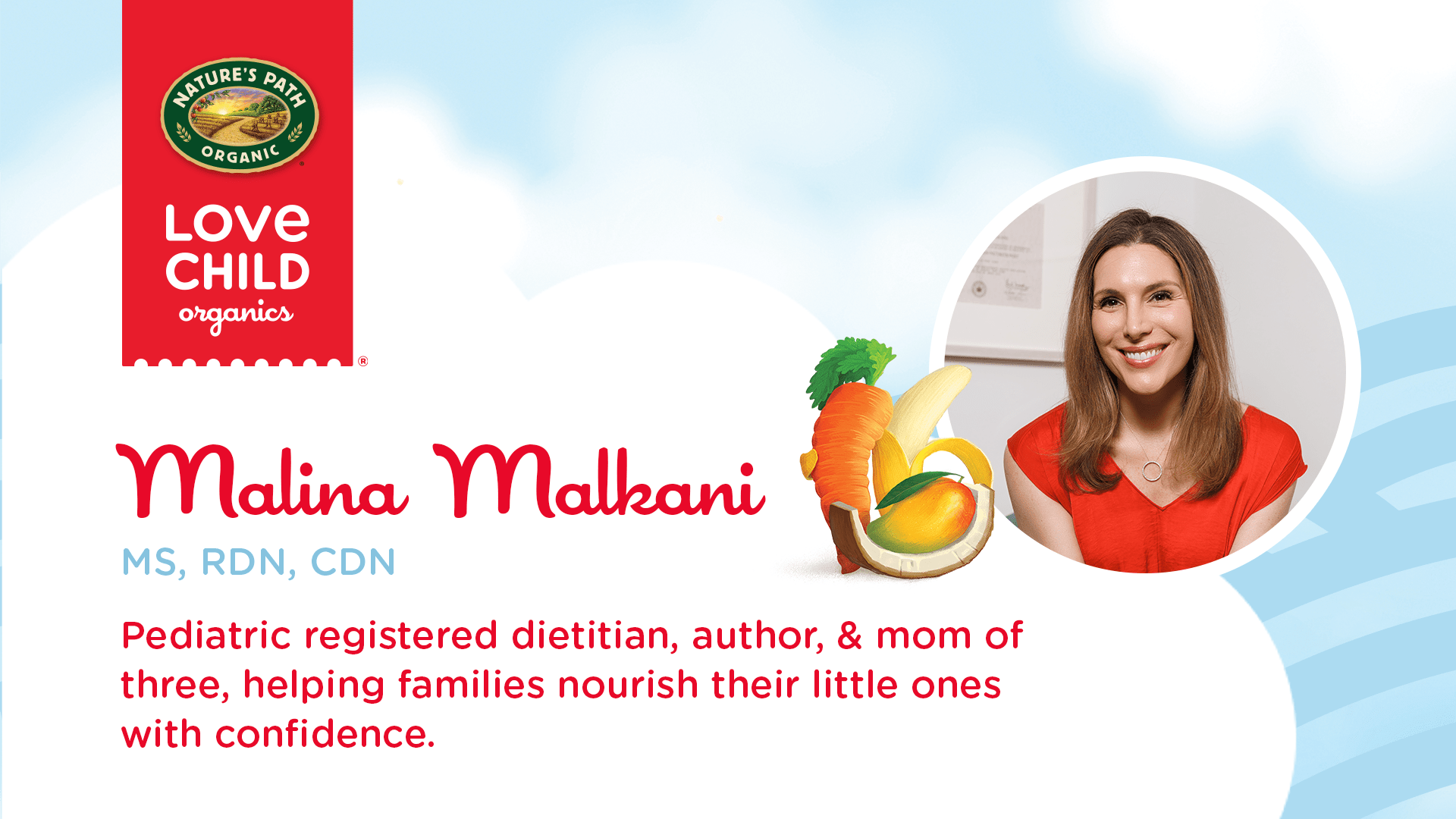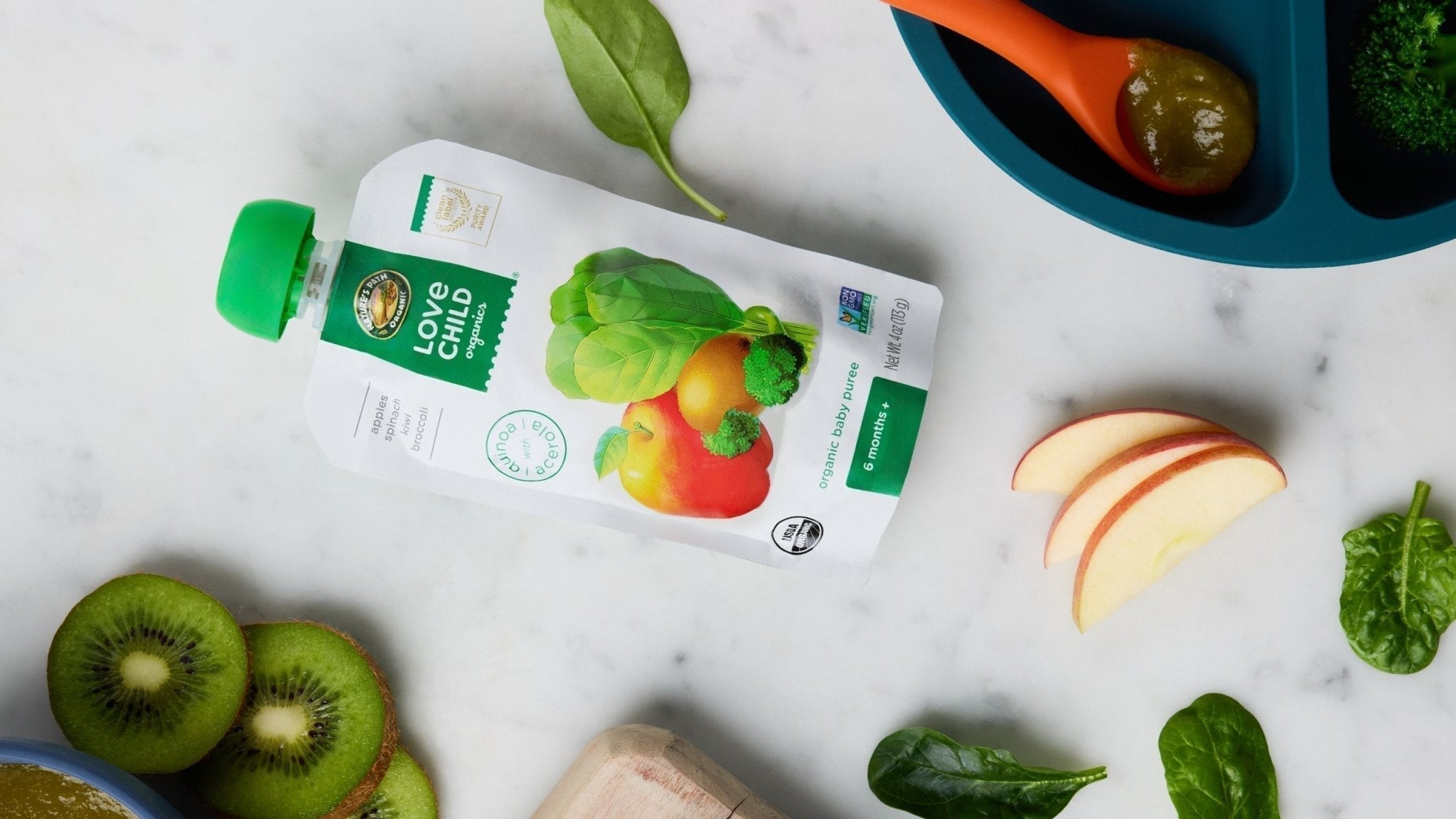
5 Easy Ways to Use Nutritious Superblends Purees to Boost Baby’s Feeding, Speech, and Language Skills
Introducing solids is about more than just food—it's a powerful opportunity to support your baby’s development across multiple domains, including feeding skills, oral motor strength, speech and language development, and nutritional intake. One of the easiest and most effective tools for doing that? High-quality, veggie-forward purees.
Whether your baby is dipping, spreading, or sucking, Love Child Organics Superblends Purees offer a nutrient-rich, flavor-diverse base for creative feeding experiences that also support baby’s communication and motor development. Here are five expert-approved ways to make the most of every pouch.
1. Straws, Open Cups, and Speech/Oral Motor Development
Babies can begin using a straw at around six months of age. Try dipping a short, soft silicone straw into puree and letting baby suck from it like a spoon. Now, prime the straw with a little more puree and hold the straw (as you would a spoon) for the baby, allowing them to close their lips around the tip with the puree. Don’t pull the straw out of their mouth immediately, but instead, give them a few seconds to start to suck. Now baby is sucking from a straw!
Over time, you can prime the straw so that eventually the entire inside of the straw is filled with puree, and the baby will be able to suck and swallow repeatedly. Now it’s time to put the straw in the straw cup, dab a bit of puree on the tip to cue baby to suck, and watch baby enjoy sipping and swallowing like a pro!
Straw drinking helps babies develop lip rounding, which is an important oral motor skill for vowel sounds like “oo,” as in “moo,” or “boo!” Straws also help babies develop lip closure, where both lips close around a spoon, finger, or piece of food while biting, chewing, and swallowing. Without lip closure, a baby cannot maintain intra-oral pressure, or the subtle suction inside our mouth to help us swallow smoothly and comfortably.
Open cup drinking can start early, too—use a tiny silicone cup filled to the top with puree to make sipping easier. It’ll be messy at first (and that’s okay!), but you can help the baby hold the cup steady, and when the puree is almost to the top, there’s very little reason to tilt the cup. You’ll notice baby using their top lip to detect the puree before taking a sip. Open cups teach babies to grade their lip movements with subtle control, an essential skill for developing new speech sounds in the future!
Try a variety of flavors as baby continues to progress, including Superblends Pears, Kale + Peas Puree, and Superblends Apples, Sweet Potatoes, Carrots + Blueberries Puree!
2. Messy Play and Brain Development
Play isn’t just fun—it helps babies explore textures and build brain connections. Put a little puree right on their highchair tray and let them touch, taste, and make a mess. It helps reduce picky eating later and builds comfort with food. Plus, it’s a wonderful opportunity to practice both receptive and expressive language. Receptive language is what baby understands, and expressive language is what they can say via signs, gestures, and/or vocalizations.
Model common mealtime words like “yum” or early baby signs like “more” while baby plays, allowing a few seconds for baby to respond with a smile, an attempt at saying the word, or repeating the sign back to you. It’s ok if they don’t; the most important thing is that we present the opportunity as often as we can.
Pro tip: Plan messy play for meals right before bathtime for easy clean-up!
3. Spreads Help Baby Learn to Chew
Babies first start to chew by munching up and down before they start to develop more circular or rotary chew, starting at about nine months of age. Chewing is important for proper bone and facial growth, especially in the jaw.
Spreading purees onto strips of lightly toasted bread or meltable crackers helps baby learn to chew and swallow safely, because it adds a touch of moisture to drier foods. It’s also a wonderful way to elevate the flavor profile of bland foods, especially if you choose a puree like the Superblends Bananas, Strawberries + Peaches Puree for a pleasant, sweet, and tart sensation!
4. Dips and Fine Motor Development
Just like spreads, dips change the flavor and texture profiles of other foods, but they also help boost fine motor skills! When babies first learn to dip solid foods into purees, they tend to dunk their fingers and baked sweet potato fries or grilled zucchini spears. Model how to dip just the tip of the food, saying, “dip, dip, dip,” as you gently touch the puree.
This more advanced grading of fine motor movements, which requires more precision to get just a bit of puree on the tip of the strips of food, is a skill we typically see around the first birthday. That’s because a baby’s pincer grasp (where the thumb and the forefinger create the “OK” sign) is also becoming more refined, and a baby is better at picking up small pieces of food.
Between 12 months and 18 months of age, your child will be able to dip those small pieces into purees with more precision, especially if you squirt just a dot onto their plate for dipping. A small ice cube tray works great for this, too – the tiny ice compartments are the perfect size for a bit of dip at the bottom and for little fingers learning how to dip and bite spears of potatoes, veggies, and toast.
Occasionally, we encounter little kids who don’t feel as comfortable playing with food and getting messy, and an ice cube tray is ideal to help them gradually gain confidence without becoming overwhelmed by too much dip on their hands.
5. Purees for Key Nutrition Benefits
Purees can be a simple yet powerful way to fill important nutritional gaps—especially during the first year of life, when babies are growing rapidly and starting to rely more on food for key nutrients like iron, zinc, and fiber.
Once your baby is around 6 months old, breast milk or formula alone may no longer meet their full nutritional needs. This is especially true for iron, a critical nutrient for brain development, and zinc, which supports a strong immune system and healthy growth. Purees made with iron- and zinc-rich foods, like lentils, chickpeas, quinoa, spinach, and kale, can help bridge that gap. You’ll find many of these powerhouse ingredients featured in Love Child Organics’ Superblends, like the Pears, Kale + Peas or Apples, Spinach, Kiwi + Broccoli pouches.
To help your baby absorb plant-based iron more effectively, offer purees that also contain vitamin C—think fruits like strawberries, apples, kiwi, or citrus. Vitamin C boosts iron absorption from non-heme (plant-based) sources, making it a smart pairing for blends that contain plant sources of iron.
Purees are also a gentle and convenient way to introduce common allergens like peanuts and tree nuts, which need to be modified for babies to reduce choking risk. Early and consistent allergen exposure is an evidence-based approach to feeding that helps reduce the risk of developing food allergies. Try mixing a couple of teaspoons of smooth peanut butter or ground almonds into a fruit or veggie puree and offering it via spoon, or as a dip for toast strips or soft fruit spears.
With every bite, your baby gets a boost of flavor, texture, and essential nutrients—all in a form that supports developmental skills, too.
The Takeaway: Raising an Adventurous Eater, One Bite at a Time
Purees are more than just baby food—they’re a gateway to adventurous eating, skill-building, and nutrient-rich nourishment. When you incorporate a wide variety of flavors, textures, nutrients, and feeding experiences into your baby’s day, you’re not only helping them learn how to eat—you’re shaping their relationship with food for years to come.
By offering high-quality Superblends from Love Child Organics in fun and functional ways, you’re giving your baby every opportunity to explore, enjoy, and engage with their food—and that’s the foundation of confident, curious, and capable eaters.
AUTHOR BIO
Melanie Potock, MA, CCC-SLP (https://mymunchbug.com/)
&
Malina Malkani, MS, RDN, CDN (https://www.malinamalkani.com/)
